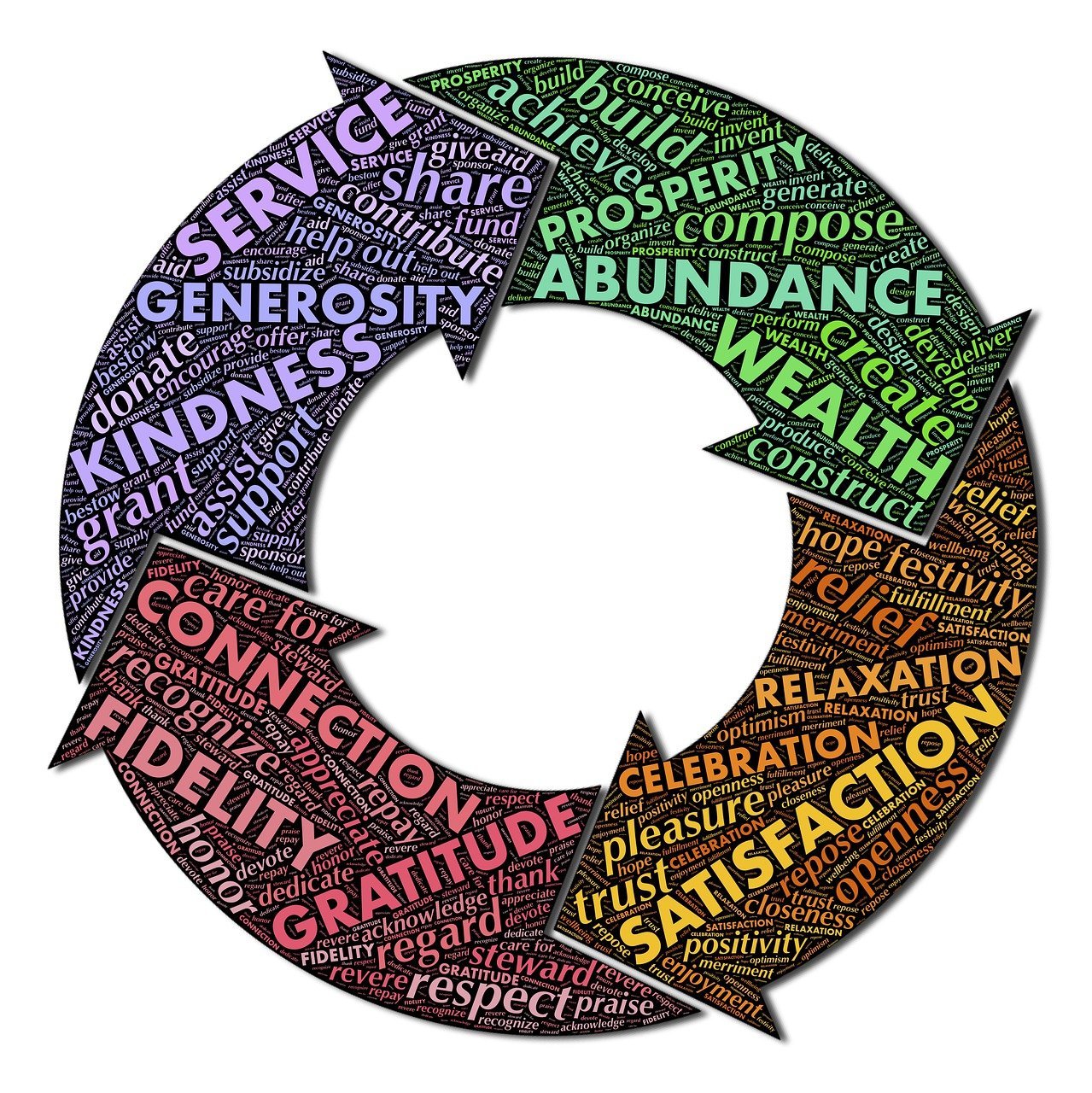In “The Art of Contentment: Cultivating Gratitude for What You Have,” discover the transformative power of expressing gratitude for what you already possess. Instead of incessantly craving for more, take a moment to reflect on the abundance that surrounds you. This article explores the benefits of cultivating contentment and how it can enhance your overall well-being. By shifting your perspective and embracing gratitude, you will unlock a sense of fulfillment and find joy in the present moment.
The Art of Contentment: Cultivating Gratitude for What You Have
In today’s fast-paced and materialistic world, it can be easy to get caught up in the never-ending chase for more. The desire for bigger and better things often overshadows the joy and contentment that can be found in appreciating what we already have. But what if I told you that cultivating gratitude for what you have can lead to a more fulfilling and content life? This article will explore the concept of contentment, the role of gratitude in cultivating it, the benefits of practicing contentment, and practical ways to cultivate gratitude in your everyday life.
Understanding the Concept of Contentment
Contentment is the state of being satisfied and at peace with what you have, rather than constantly longing for more. It is an art that requires practice and a shift in mindset. It is not about settling or becoming complacent, but rather about finding joy and fulfillment in the present moment. Contentment is accepting and appreciating what you have while still striving for personal growth and improvement.
The Role of Gratitude in Cultivating Contentment
Gratitude is the foundation upon which contentment is built. It is the practice of recognizing and acknowledging the blessings, big and small, that exist in your life. When you cultivate gratitude, you shift your focus from what you lack to what you already have. This shift in perspective allows you to fully appreciate and find contentment in the present moment.
Benefits of Practicing Contentment
Practicing contentment has numerous benefits for your overall well-being. Firstly, it reduces stress and anxiety by alleviating the constant pressure to acquire more. When you are content with what you have, you no longer feel the need to constantly strive for external validation or material possessions. This leads to a greater sense of peace and tranquility in your everyday life.
Secondly, contentment allows you to enjoy the journey rather than solely focusing on the destination. It helps you find joy and satisfaction in the process of working towards your goals, rather than solely relying on the achievement of those goals for happiness. This leads to greater fulfillment and overall life satisfaction.
Lastly, contentment builds resilience. When you are content with what you have, setbacks and challenges become easier to navigate. You are better equipped to deal with adversity and bounce back from setbacks because your happiness and self-worth are not solely dependent on external circumstances.

Overcoming the Desire for More
The desire for more is deeply ingrained in our society. We are constantly bombarded with messages telling us that we need the latest gadgets, trendy clothes, and luxurious possessions to be happy. However, the reality is that material possessions do not bring lasting happiness. To overcome the desire for more, it is important to shift your focus from external validation to internal fulfillment.
One way to do this is by practicing gratitude. By regularly expressing gratitude for what you have, you rewire your brain to focus on the positives rather than constantly seeking more. Gratitude allows you to recognize the abundance that already exists in your life and find contentment in it.
Developing a Gratitude Mindset
Developing a gratitude mindset is an essential step in cultivating contentment. It involves training your mind to consistently seek out and appreciate the positives in every situation, no matter how small or insignificant they may seem.
One way to develop a gratitude mindset is through daily affirmations. Take a few minutes each day to reflect on what you are grateful for. Write down three things you appreciate about your life, whether it’s a supportive family, good health, or a beautiful sunset. By consciously acknowledging and expressing gratitude for these things, you begin to shift your focus towards gratitude and contentment.
Practical Ways to Cultivate Gratitude
Cultivating gratitude doesn’t have to be complicated or time-consuming. There are many simple and practical ways to incorporate gratitude into your daily life.
Keeping a Gratitude Journal
Keeping a gratitude journal is an effective way to cultivate gratitude. Set aside a few minutes each day to write down three things you are grateful for. They can be big or small, from a promotion at work to a kind smile from a stranger. By regularly recording your blessings, you train your mind to actively seek out and appreciate the positives in your life.
Engaging in Acts of Kindness
Another way to cultivate gratitude is by engaging in acts of kindness. When you extend kindness to others, whether it’s by volunteering, helping a friend, or simply showing appreciation, you not only make a positive impact on their lives but also cultivate a sense of gratitude within yourself. Acts of kindness remind you of the interconnectedness of humanity and amplify your own feelings of gratitude.
Finding Joy in the Little Things
Often, we overlook the simple pleasures and joys in life because we are too focused on what we lack. By consciously seeking out and finding joy in the little things, such as a warm cup of coffee in the morning or a beautiful sunset, you develop a habit of appreciating the present moment. This habit fosters gratitude and contentment in your everyday life.
Creating a Gratitude Ritual
Establishing a gratitude ritual can help anchor your gratitude practice and make it a regular part of your life. This can be as simple as expressing gratitude before meals or setting aside a specific time each day to reflect on what you are grateful for. By making gratitude a routine, it becomes a natural and integrated part of your life.
Surrounding Yourself with Grateful People
Surrounding yourself with grateful people can also help cultivate gratitude within yourself. Gratitude is contagious, and being around people who frequently express gratitude can inspire and reinforce your own gratitude practice. Seek out friends, family, or colleagues who embody gratitude and spend time with them to nurture your own grateful mindset.
Shifting Perspective: Seeing Opportunities Instead of Lacking
One of the key mindset shifts in cultivating gratitude and contentment is to see opportunities instead of lacking. Instead of focusing on what you don’t have, train your mind to appreciate the possibilities and abundance that exist in your life. This shift in perspective opens up new doors and allows you to find contentment in the present moment, rather than constantly striving for more.
Accepting Imperfections and Embracing Simplicity
Accepting imperfections and embracing simplicity are essential components of cultivating contentment. Nobody is perfect, and constantly striving for perfection only leads to dissatisfaction and unhappiness. By accepting your imperfections and embracing simplicity, you let go of the need for external validation and find contentment in who you are and what you have.
Learning to Be Present and Mindful
Practicing mindfulness and being fully present in the moment is another powerful way to cultivate gratitude and contentment. When you are mindful, you are able to fully appreciate and savor the present moment, rather than dwelling on the past or anxiously anticipating the future. This presence allows you to recognize the blessings and abundance that surround you, fostering a sense of gratitude and contentment.
Avoiding Comparison and Social Media Traps
Comparison is the thief of joy, and social media has made it easier than ever to fall into the comparison trap. To cultivate gratitude and contentment, it is important to limit your exposure to social media and be mindful of the comparisons you make. Remember that social media often showcases only the highlights and carefully curated moments of others’ lives, and comparing yourself to these unrealistic standards only serves to undermine your own sense of gratitude and contentment.

Teaching Gratitude to Others: Family and Friends
Sharing the practice of gratitude with your family and friends can have a profound impact on their lives as well. Encourage them to keep their own gratitude journals, engage in acts of kindness together, and share what they are grateful for during mealtime or family gatherings. By teaching gratitude to others, you not only strengthen your own gratitude practice but also create a culture of gratitude within your relationships.
Building Resilience through Contentment
Contentment and resilience go hand in hand. When you are content with what you have, setbacks and challenges become opportunities for growth and learning, rather than sources of despair. By cultivating gratitude and contentment, you build resilience and develop the mindset and coping mechanisms necessary to navigate the ups and downs of life with grace and resilience.
Addressing the Role of Consumerism
Consumerism plays a significant role in society’s constant desire for more. It is important to be mindful of the impact of consumerism on your own mindset and cultivate a healthy relationship with material possessions. Practice intentional consumption by making conscious purchasing decisions, focusing on quality over quantity, and prioritizing experiences and relationships over material possessions. By addressing the role of consumerism in your life, you can cultivate gratitude and contentment for what truly matters.
Balancing Ambition with Gratitude
Ambition and gratitude are not mutually exclusive. It is possible to have goals and aspirations while still being content with what you have. The key is to strike a balance between ambition and gratitude. Set goals that align with your values and priorities, but also take time to appreciate and find contentment in the progress you have made and the blessings that already exist in your life.
Overcoming Challenges on the Path to Contentment
The path to contentment is not always smooth. There will be challenges and obstacles along the way, but with the right mindset and practices, you can overcome them.
One challenge is the temptation to fall back into old patterns of seeking external validation and constantly striving for more. When faced with this challenge, remind yourself of the benefits of cultivating contentment and the gratitude mindset. Reflect on the progress you have made and the positive changes in your life that have resulted from your gratitude practice.
Another challenge is the pressure from society to conform to materialistic norms. It can be challenging to go against the grain and prioritize contentment over constant consumption. In these moments, remind yourself of your values and what truly matters to you. Surround yourself with supportive and like-minded individuals who understand and respect your commitment to cultivating gratitude and contentment.
Practicing Self-Compassion and Acceptance
Practicing self-compassion and acceptance is vital on the path to contentment. Remember that perfection is not attainable, and it is okay to make mistakes or experience setbacks. Treat yourself with kindness and understanding, and extend the same compassion and acceptance to others. By embracing imperfections and practicing self-compassion, you create a nurturing environment in which gratitude and contentment can thrive.
Developing a Long-Term Contentment Plan
Developing a long-term contentment plan involves setting intentions and creating actionable steps to cultivate gratitude and contentment in your life. Reflect on your values, priorities, and what brings you true fulfillment, and align your actions with these principles. Set realistic and achievable goals for your gratitude practice, and regularly evaluate and reassess your progress. By developing a long-term contentment plan, you create a roadmap for a fulfilling and content life.
Conclusion
Cultivating gratitude for what you have and finding contentment in the present moment is a lifelong journey. It requires conscious effort, a shift in mindset, and consistent practice. By embracing gratitude, shifting perspective, practicing mindfulness, and surrounding yourself with grateful people, you can cultivate contentment and lead a more fulfilling and joyful life. Remember, it is not about the pursuit of more, but rather about finding happiness and contentment in the abundance that already exists within and around you. The art of contentment is within your reach; all it takes is a grateful heart and a willingness to appreciate what you have.

